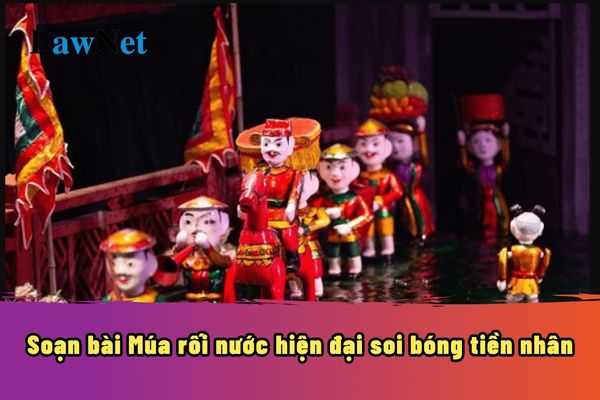Vietnam: What are the guidelines for preparing the lesson "Múa rối nước hiện đại soi bóng tiền nhân"? Are students required to be able to comment on the overall content of the text after completing the 10th-grade Literature curriculum?
What are the guidelines for preparing the lesson "Múa rối nước hiện đại soi bóng tiền nhân"?
Preparing the lesson "Múa rối nước hiện đại soi bóng tiền nhân" is one of the lessons that 10th-grade students will study. Therefore, 10th-grade students can refer to the following sample lesson "Múa rối nước hiện đại soi bóng tiền nhân":
|
Guidelines for preparing the lesson "Múa rối nước hiện đại soi bóng tiền nhân"
|
*Note: Information is for reference only./.

What are the guidelines for preparing the lesson "Múa rối nước hiện đại soi bóng tiền nhân"? Are students in Vietnam required to be able to comment on the overall content of the text after completing the 10th-grade Literature curriculum? (Image from the Internet)
Are students in Vietnam required to be able to comment on the overall content of the text after completing the 10th-grade Literature curriculum?
Under sub-section 2, Section 5 of the General Education Program for Literature, issued together with Circular 32/2018/TT-BGDDT, after studying the texts in the 10th-grade Literature curriculum, students need to meet the following requirements:
(1) Reading comprehension of Content
- Be able to comment on the overall content of the text; analyze typical details, themes, stories, characters, and their relationships within the wholeness of the work.
- Analyze and evaluate the theme, ideas, and messages the text aims to convey to the reader through its artistic form; analyze some basis for determining the theme.
- Analyze and evaluate the sentiments, emotions, and main inspiration expressed by the author in the text. Identify the moral and cultural values from the text.
(2) Reading comprehension of Form
- Recognize and analyze some elements of epic and mythological stories like space, time, plot, characters, narrator and character speeches,...
- Recognize and analyze some elements of stories like characters, narrative, third-person narrator (omniscient narrator), and first-person narrator (limited narrator), perspective, narrator’s speech, character’s speech,...
- Analyze and evaluate the aesthetic value of some elements in poetry such as words, images, rhyme, rhythm, antithesis, lyrical subject, lyrical character.
- Recognize and analyze some elements of cheo or traditional drama scripts such as theme, anonymity, story plot, characters, dialogues, transmission methods,...
(3) Relation, Comparaion, Connection
- Apply understanding of author Nguyen Trai to comprehend some of his works.
- Recognize and analyze the historical and cultural context reflected in literary works.
- Relate to identify some closely related content across literary works from different cultures.
- State the significance or impact of literary works on views, perspectives, thinking, and feelings of the reader; express personal emotions and evaluations of the work.
(4) Extensive Reading
- In one school year, read a minimum of 35 literary texts (including those guided for reading online) with genre and length equivalent to texts studied.
- Memorize some favorite poems or poem excerpts within the program.
Thus, after completing 10th-grade literature, students will need to know how to comment on the overall content of the text.
What literary knowledge do 10th-grade students in Vietnam learn?
Moreover, under sub-section 2, Section 5 of the General Education Program for Literature, issued together with Circular 32/2018/TT-BGDDT, literary knowledge of 10th-grade students in Vietnam includes:
- Dominant inspiration of the work
- Story, third-person narrator (omniscient narrator), first-person narrator (limited narrator), perspective in the story
- Some elements of epic or mythological stories: space, time, plot, narrator, character, narrator’s speech and character’s speech,…; value and vitality of epic
- The aesthetic value of some formal elements in poetry
- Some elements of folk cheo or tuong scripts: anonymity, theme, story plot, character, dialogue, transmission methods,…
- Historical or cultural, social context and the works
- Basic understanding of Nguyen Trai that aids in understanding some of his representative works
- Content proximity between literary works from different cultures
- Literary works and the reader

